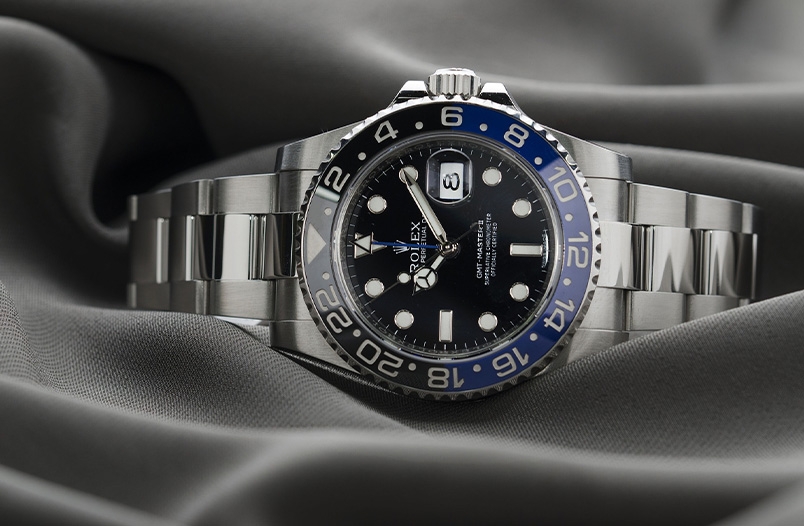Rolex Watch Prices UK
Anyone with half an eye on watch values will know that Rolex pricing became unstable a couple of years ago and some values fell very sharply. I’m delighted to say that, as we turned the corner into 2023, things began to stabilise in the luxury watch market, and a degree of normality returned.
So, what happened? What’s happening now, and what does this mean for the future?
What Happened to Rolex Watch Prices in the UK and Beyond?
Over the past couple of years we all heard various terms bandied around in relation to the fall in prices – “crash” – “collapse” – “bubble burst” etc.
But what actually happened?
Well, I think the last term “bubble burst “is the closest to the truth, because a crash or collapse would have affected everything significantly, and to be honest, that wasn’t the case.
To explain what happened, I’m going to use our favourite brand, Rolex, as an illustration, although the principles apply to any luxury watch brand.
In the early 2020’s, a market developed in the world of Rolex watch prices which was both unrealistic and unsustainable. It was based around the principle that Rolex pricing was rising quickly in the preowned market due to lack of supply of new watches by Rolex, and that this could continue ad infinitum. Hence, we saw the values of an unworn Hulk rise to £30,000, and a similar steel Daytona to £40,000 to name but two.
The two most extreme examples were the ….
- Tiffany blue Oyster Perpetual – a £5,000 watch that was selling at over £30,000.
- John Mayer Daytona – a £32,000 watch selling at £120,000.
Nothing wrong with that you say, if people are prepared to pay that kind of money, then what’s the problem? The problem is that this whole market completely ignored my favourite principle of watch investment – ‘Supply and Demand’
Supply & Demand
For the value of any asset to increase over time, demand must exceed supply, that is a basic economic principle. The higher the demand/supply ratio, the more prices will rise as people effectively fight over a relatively scarce commodity.
This is where it all went wrong. The bubble burst when people realised that they were paying ridiculously inflated prices for things that were just not that rare. If I log onto Chrono 24 this morning, I can see 545 UNWORN Rolex Daytonas in the UK alone.
Almost FIVE HUNDRED AND FIFTY!!!
Bear in mind that an unworn watch is a commodity, they are all identical with nothing to distinguish one from another. That means that the only differentiating factor between them is the price, and when the tower begins to crumble, it’s a race to the bottom. The person with the cheapest one will sell it, so prices fall rapidly.
This leads to the questions – where are prices now and where are they going?
Where are we now?
Early in 2025, Rolex watch prices in the UK are broadly split into three categories:
Type 1
There are those watches that were massively over inflated until 2023 and whose values took a significant tumble. These are the commodity watches – current model (not discontinued) Daytona’s, Submariners etc. Watches that were selling at up to 3 to 4 times their current retail price and which have now fallen sharply.
Supply is very plentiful; demand is low because people are still not sure whether the price will fall further and in most cases these watches lost at least 30% of their value.
Type 2
Non-commodity watches are superb examples of discontinued, popular references. Things that are genuinely in short supply, and for which there is still a high demand. For example, we currently have in stock a fully stickered example of a 2001 Rolex 16570 Explorer II and it is the only one currently for sale in Europe. Compare that to the 545 Daytonas in the UK alone and you can see how the value of one will be more stable than the other. Prices of these watches dipped about 5-10%, bottomed out and are now on the rise again.
Type 3
The third category is like the second but refers to watches that for some inexplicable reason have fallen in value more than seems logical or in any way necessary. The classic Rolex Explorer is a great example. These were selling at up to £8000 until relatively recently and were heavily tipped to be a £10,000 watch. Prices on these have fallen sharply and you can now buy an excellent example for a little over £6,000. There is no reason why this price should have fallen that much
Where are UK Rolex Watch Prices going in the short-term?
If we return to our three categories of watches:
Type 1
Because of the supply and demand situation with current model Rolex watches, there is really very little prospect of the really over inflated values recovering fully any time soon, if ever.
Type 2
The value of great examples of most discontinued Sports Rolex took a bit of a dip and are now starting to steadily increase again for the best examples.
Type 3
These watches have fallen further than they needed to, and I would predict that they will recover quickly. In short, this is an excellent time to buy a 36mm Explorer if you can find a truly great one.
In Conclusion
While the luxury watch market and particularly Rolex watch pricing in the UK has been unstable, it is far from all bad news. If you follow the advice that we’ve always given, around buying the best quality, discontinued references that you can find, not only is your investment safe but it’s pretty sure to continue to grow.
Visit our Rolex Brand page for more advice on buying a pre owned Rolex watch from Oakleigh Watches.



